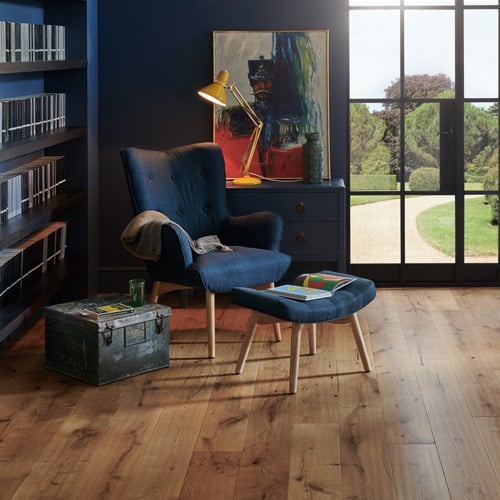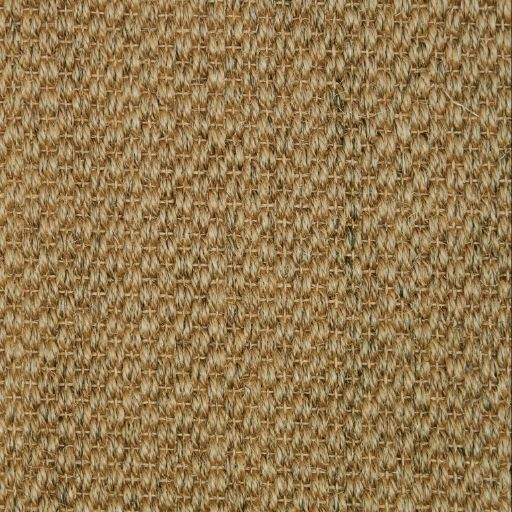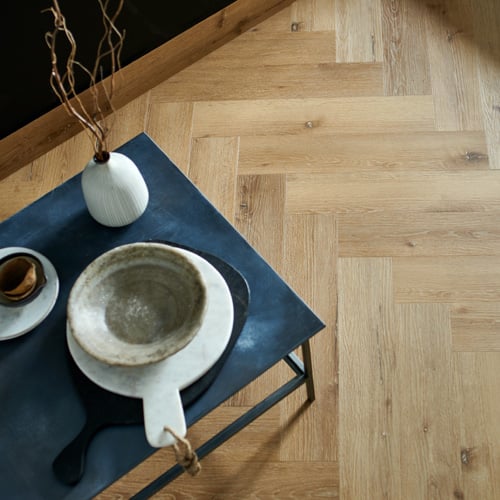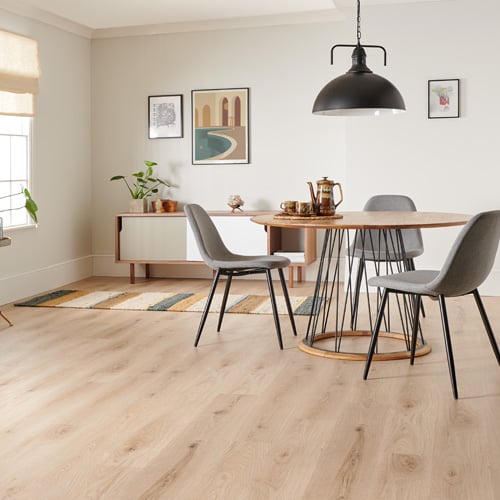Underfloor heating is increasingly becoming a sought-after luxury in modern homes. It offers even heat distribution, reduces allergens circulated by forced-air systems, and, as a bonus, grants that heavenly sensation of warm floors underfoot on chilly mornings. When paired with wood flooring, the elegance of timber meets the functionality of efficient heating. However, choosing the right type of wood flooring to complement underfloor heating is crucial. Let’s explore which wood flooring options work best.
Why Some Wood Floors Are Better Suited for Underfloor Heating
Wood is a natural material and is affected by changes in temperature and humidity. Underfloor heating systems can change the moisture content of wood, causing it to expand or contract. Thus, the best wood floors for underfloor heating are those least prone to moisture changes and can transmit heat effectively without damage.
Engineered Wood Flooring: The Top Contender
Stable Construction: Engineered wood consists of multiple layers of wood, cross-laid and bonded together. This construction grants it greater stability compared to solid wood, making it less likely to warp, shrink, or expand with temperature fluctuations.
Efficient Heat Conduction: The ply construction allows for effective heat transfer, ensuring warmth is spread evenly across the floor.
Variety: Engineered wood floors come in a range of species, finishes, and styles. You’re not sacrificing aesthetics for functionality.
Solid Wood Flooring: Choose with Care
Not all solid woods are ideal for underfloor heating. However, some species, due to their inherent properties, fare better than others:
Oak: Renowned for its stability and durability, oak is a popular choice for homes with underfloor heating. It responds well to temperature changes without significant expansion or contraction.
Ash: This wood type possesses good thermal conductivity, ensuring efficient heat transfer.
Walnut: Its stable nature and rich aesthetic make walnut another option to consider.
However, thick solid wood boards or those prone to significant moisture-content changes might not be suitable. Examples include beech and maple, which are more reactive to humidity and temperature variations.
View Engineered Wood Flooring Here https://oakflooringdirect.co.uk/engineered-wood-flooring
Essential Factors to Consider
Thickness: Thinner boards (usually around 18mm or less for solid wood, and even thinner for engineered wood) are typically preferred. They allow for quicker and more efficient heat transfer.
Thermal Resistance: Ideally, the combined resistance of the wood flooring and any underlay should not exceed a certain threshold (often around 0.15 m^2K/W). The lower the thermal resistance, the more efficient the system will be.
Installation: Always ensure that there’s a good-quality, compatible underlay between the wood flooring and the heating system. Some underlays are specifically designed for use with underfloor heating, providing a barrier against moisture and ensuring effective heat transfer.
Temperature Control: It’s essential to maintain a consistent temperature. Rapid temperature fluctuations can be detrimental to wood floors. Ensure your heating system has a floor thermostat to regulate the maximum floor temperature, usually capped at around 27°C.
Acclimatisation: Before installation, it’s crucial to allow wood flooring to acclimatise in the room where it will be installed for several days. This ensures that the wood adjusts to the room’s average temperature and humidity, reducing post-installation movement.
Maintenance and Care
Even with the best-suited wood flooring, maintenance is crucial:
Gradual Seasonal Changes: When transitioning between seasons, adjust the heating system gradually over several days.
Avoid Moisture: Although underfloor heating reduces the risk of moisture-related issues, it’s still essential to avoid standing water or spills, which can damage the wood.
Regular Checks: Regularly check for any signs of excessive dryness or damage. If the wood starts showing cracks or gaps, it might be due to very low humidity. Consider using a humidifier to maintain an optimal environment.
Conclusion
Pairing wood flooring with underfloor heating brings together the best of aesthetic charm and modern comfort. While engineered wood is a prime choice due to its stability and efficient heat conduction, some solid woods can also be suitable with proper care. As always, it’s vital to consult with flooring and heating professionals to ensure your chosen wood floor is compatible with underfloor heating, guaranteeing a harmonious blend of warmth, comfort, and timeless beauty.
Back to Feed



